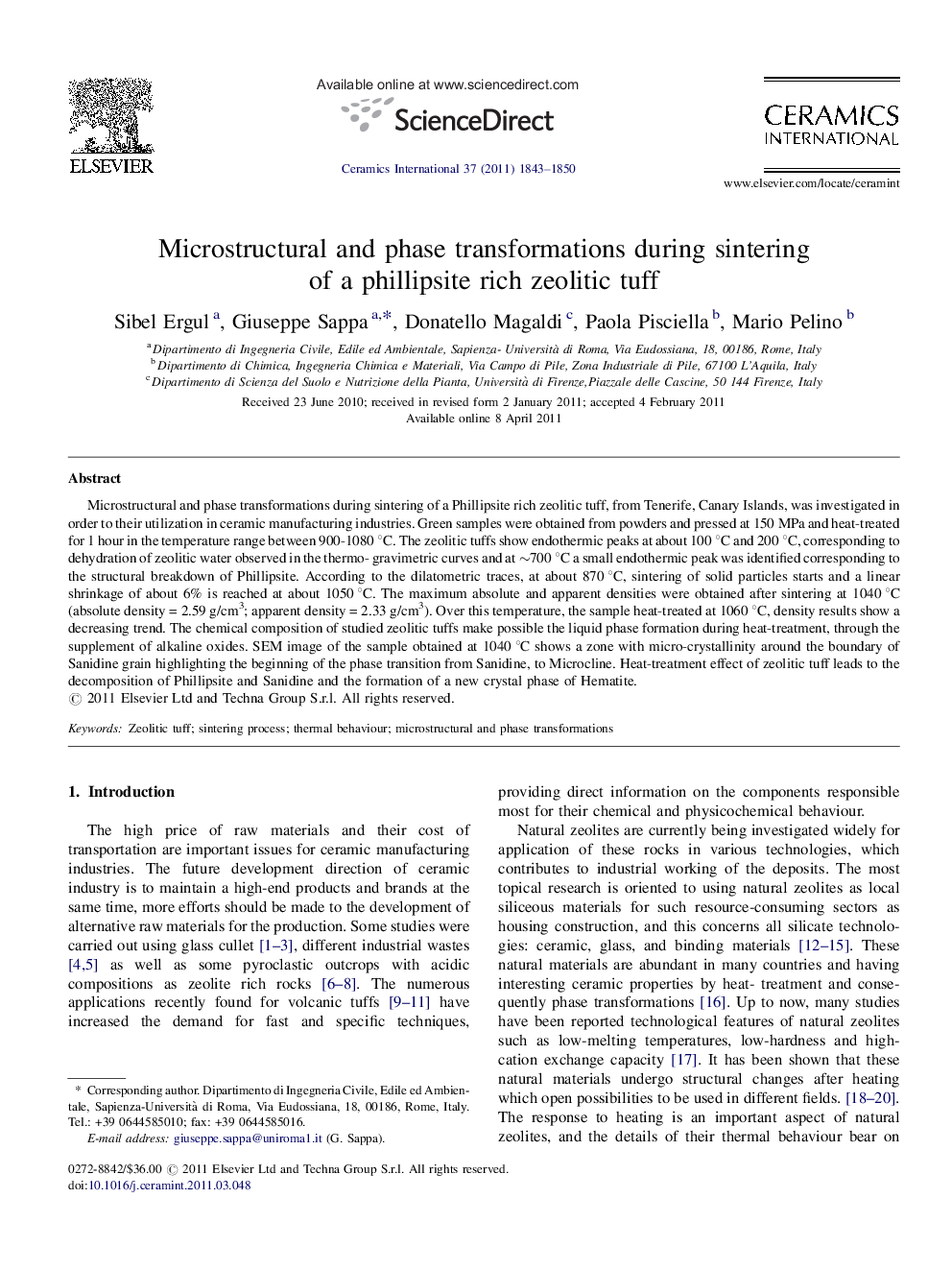| Article ID | Journal | Published Year | Pages | File Type |
|---|---|---|---|---|
| 1464484 | Ceramics International | 2011 | 8 Pages |
Microstructural and phase transformations during sintering of a Phillipsite rich zeolitic tuff, from Tenerife, Canary Islands, was investigated in order to their utilization in ceramic manufacturing industries. Green samples were obtained from powders and pressed at 150 MPa and heat-treated for 1 hour in the temperature range between 900-1080 °C. The zeolitic tuffs show endothermic peaks at about 100 °C and 200 °C, corresponding to dehydration of zeolitic water observed in the thermo- gravimetric curves and at ∼700 °C a small endothermic peak was identified corresponding to the structural breakdown of Phillipsite. According to the dilatometric traces, at about 870 °C, sintering of solid particles starts and a linear shrinkage of about 6% is reached at about 1050 °C. The maximum absolute and apparent densities were obtained after sintering at 1040 °C (absolute density = 2.59 g/cm3; apparent density = 2.33 g/cm3). Over this temperature, the sample heat-treated at 1060 °C, density results show a decreasing trend. The chemical composition of studied zeolitic tuffs make possible the liquid phase formation during heat-treatment, through the supplement of alkaline oxides. SEM image of the sample obtained at 1040 °C shows a zone with micro-crystallinity around the boundary of Sanidine grain highlighting the beginning of the phase transition from Sanidine, to Microcline. Heat-treatment effect of zeolitic tuff leads to the decomposition of Phillipsite and Sanidine and the formation of a new crystal phase of Hematite.
